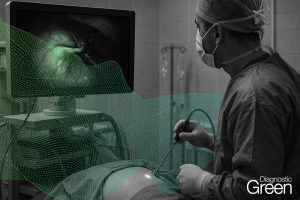Aim: The aim of this study is to compare the number and pattern of sentinel lymph nodes (SLNs) identified by indocyanine green (ICG) and radioisotope (RI) tracers in early-stage cervical cancer (CC) and evaluate the clinical implications of multiple SLN detections by ICG.
Methods This prospective study included 88 patients with histologically confirmed CC who underwent semi-radical/radical hysterectomy or trachelectomy with SLN mapping using both ICG and RI tracers at a single tertiary center between April 2017 and December 2024. ICG was injected into the cervix immediately before surgery, and RI (99m technetium-phytate) was administered the day before surgery. SLNs were detected intraoperatively using near-infrared fluorescence and gamma-ray probes. SLN detection counts were compared bilaterally between the two tracers.
Results The bilateral SLN detection rate was equivalent for both tracers (92.0%). However, ICG identified significantly more SLNs per patient than RI (mean: 2.56 vs. 2.10; p = 0.028), with more frequent multiple SLN detection on both pelvic sides (right, 27% vs. 12.3%; left, 32.8% vs. 11.5%; p < 0.0001). A moderate correlation was observed between SLN counts obtained using the two methods (r = 0.535).
Conclusion ICG is as effective as RI in bilateral SLN detection and more sensitive in detecting multiple nodes. This likely reflects ICG’s higher sensitivity owing to its lower molecular weight and deeper lymphatic penetration. However, the risk of SLN over-identification should be considered during clinical interpretation and surgical planning.




